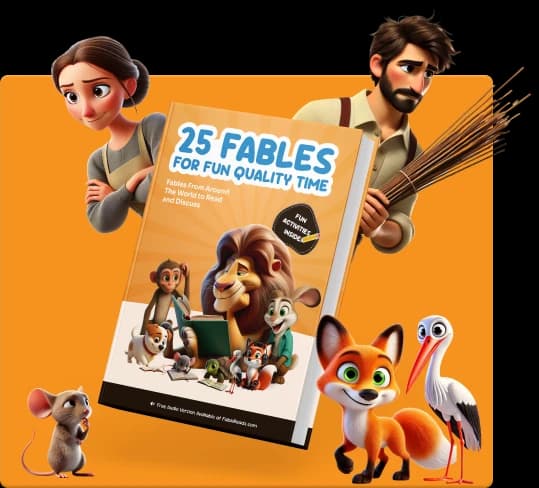Aesop | Greece
La Liebre y la Tortuga
La tortuga lenta y constante gana una carrera contra la presummida y demasiado confiada liebre.

Había una vez, en un denso bosque, una liebre veloz y una lenta tortuga. La liebre estaba orgullosa de lo rápido que podía correr y a menudo se lo contaba a los otros animales. Le gustaba burlarse de la tortuga por ser tan lenta.
Un día, la tortuga se cansó de las fanfarronerías de la liebre. Así que la tortuga retó a la liebre a una carrera. La liebre pensó que era una broma y aceptó. Eligieron un camino para la carrera, y todos los animales del bosque vinieron a ver.
Cuando empezó la carrera, la liebre corrió rápidamente, dejando muy atrás a la tortuga. Al ver lo despacio que iba la tortuga, la liebre estaba segura de que ganaría. Pensó: "Tengo tanto tiempo, que puedo tomar una siesta," y se durmió bajo un árbol.
Pero la tortuga siguió adelante, lenta y constante. No le preocupaba lo rápido que era la liebre. Solamente se concentraba en llegar al final.
Mientras la liebre dormía, la tortuga se fue acercando poco a poco a la meta. Cuando la liebre despertó y vio que la tortuga casi había llegado, ya era demasiado tarde. Corrió tan rápido como pudo, pero la tortuga ya había cruzado la meta y ganado.
Los animales del bosque aplaudieron a la tortuga. Ella les había demostrado que ser constante y no rendirse puede llevar al éxito.
Después de eso, la liebre dejó de pensar que era mejor que los demás y no se volvió a burlar de otros.
Compra un Libro y Ayuda a Llevar Fábulas al Mundo
Disfruta de 25 fábulas seleccionadas de por vida, impresas. Cada compra apoya historias gratuitas para niños, padres y maestros en todo el mundo en fablereads.com

















